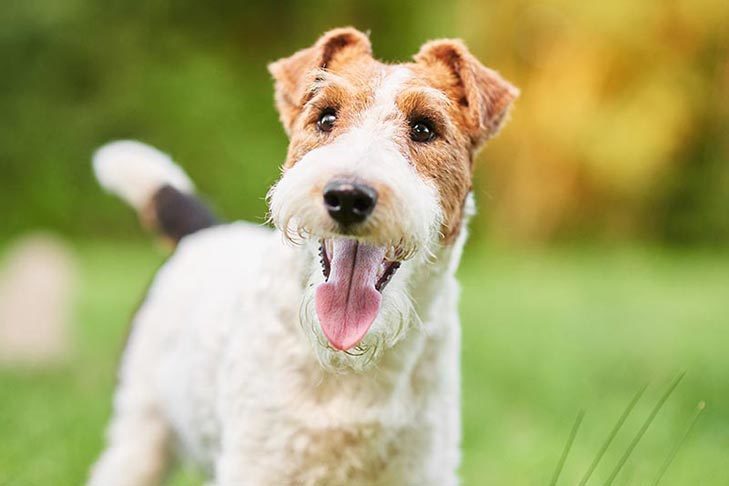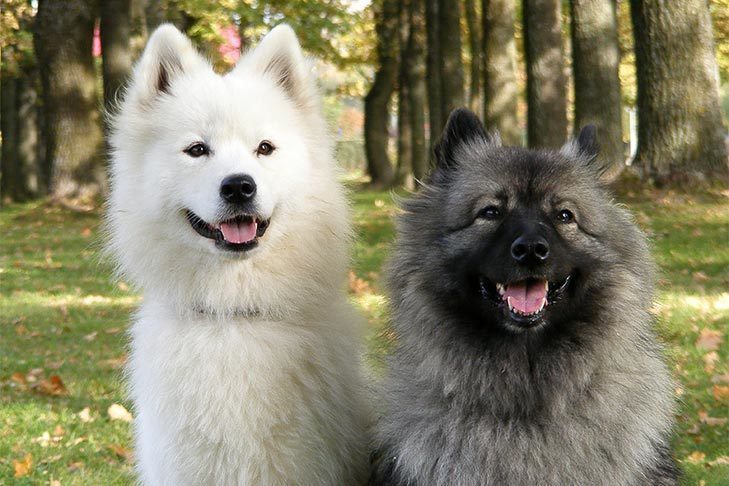Your dog really can talk to you, but in general, he does it with his body language. Dogs use a variety of unique methods for communicating emotions and telling us what they intend. In some ways it is similar to human body language; in other ways, it is quite different. Your dog uses body language as often or even more so than he uses his voice. Often we human misunderstand these signals because they differ from our own. Understanding what a dog means when he uses his body can make it easier for you to communicate with him and improve your overall relationship.
Wagging Words
We all love to see our dogs’ tails wag, and usually, we assume that it means he is happy. In truth, wagging can be used to convey a variety of emotions and intentions. Dogs wag their tails when they are stimulated or aroused – this can be because they are happy, excited, frustrated, or even when they are angry and about to attack. The position and direction of the wag can help you determine what that tail is telling you.
The faster the wag, the more excited the pup. A longer, slower, side to side tail wag is probably what you’re used to when you’re dog greets you, and you might feel like he’s wagging his whole boy. This is a relaxed wag, a way to say “Hi! I’m glad to see you!” If the tail seems to twitch or wags very quickly, it could be less positive, a sign that your dog is on alert and ready to take action.
Wag direction can also tell you something. Studies imply that happy wags are usually to the right, while negative wags often move to the left. The “helicopter” wag, a wag where the tail actually spins in a circle, is undoubtedly a happy wag, usually used when greeting a beloved friend or “pack member”.
Tail position during wagging indicates the assertiveness of the wag. The higher the wag, the more assertive the pup. A neutral position – not tucked but not sky high – is the sign of a relaxed dog, while a tail held high in the air like a banner shows confidence. Some breeds have naturally low tails, like Italian Greyhounds, so the lower wag may be relative, while curly tailed breeds like Pugs may curl the tail very tightly when feeling confident and excited, or less curled when stressed or frightened.
Raise Those Hackles
A dog hackles “rise” because the hair along their back stands up. This is technically labeled as piloerection and occurs when the fur fluffs up across the shoulders or down the back, sometimes all the way to the tail. While this is definitely a sign that the dog is alert, it is not always negative. Much like goosebumps in people, it happens involuntarily, and can be the result of fear, excitement, or just intense interest in something. You may have seen your dog do this when encountering a new object – it could signify nothing more than curiosity about what the object might be.

Pup Postures
How a dog hold his body can tell you a lot about what he is feeling. Most of us know what a cowering dog looks like, and that this posture indicates fear or stress. Dogs usually cower to tell other dogs “I mean no harm” by appearing smaller and less threatening. This submissive posture can also be shown when your dog rolls over to show his belly to another dog. While offering his belly may be a request from a relaxed pup for a satisfying belly rub, it can also be a way for a dog to tell a threatening intruder that he poses no threat. In such a case, you dog may actually be afraid or stressed by the other dog or new person.
When you pup’s weight is shifted forward, he is showing strong interest or offensive intentions. If his weight is shifted toward the food bucket, he is trying to tell you he wants to be allowed to hop in and eat; if it’s toward another dog, especially if the tail is held high and twitching, your pup is trying to appear larger, and may be threatening the other dog or trying to display dominance.
On the other hand, you may have seen the “play bow”, when your dog places his chest on the ground and his rear high in the air. This is the universal dog signal for “Let’s play!” telling other dogs and humans that it’s time for a game of chase or fetch.
Furry Faces
Dogs actually have several facial expressions that are similar to humans, but they tend to use them somewhat differently. People may yawn to stay awake when they are tired or bored, but dogs usually yawn to calm themselves and others when they are stressed. It is a signal to the pack that everything is okay, and often if you yawn, your dog will yawn back to reassure and comfort you and reinforce the idea that all is well.
Dog smiles are both very common and very commonly misunderstood. In some cases, a dog will “bare his teeth” as a way to tell others that they are ready to attack or want to be left alone. It’s a way of saying “Look at my weapons!” Usually this kind of “smile” is paired with threatening body posture or growling, making it clear that this is not a happy smile.
Dogs do have a happy or submissive smile as well. Usually this will involve just the front teeth, unlike the more aggressive tooth baring that shows all the teeth and is accompanied by growling. The happy smile is also often combined with a whole body tail wag and a loose wiggly posture. This dog is saying “Hi! I want to be friends!”

It’s All in the Eyes
Your dog uses his eyes to tell you a lot about his mood and feelings. There are soft and hard expressions: soft eyes involve relaxed lids and may even look like your dog is squinting; hard eyes may seem cold or unfeeling. The softer expression is a sign that your dog is happy and calm. A hard, unblinking stare, especially if it lasts for a while, is a sign that your dog is stressed or even feeling aggressive in response to a threat.
Eye contact means a lot to your dog. When your dog wants to ease the tension or calm a situation, he may look away from you or another dog. A stressed pup will intentionally avoid eye contact. If a dog shows the whites of his eyes, also known as “whale eye”, it is a sure sign of stress and anxiety. It can also be a sign that a frightened or threatened dog is about to take action and bite or attack the source of stress.
A dog rarely uses just one form of boy language at a time – usually you will see a combination of these various forms of communication to tell you what he feels. Your pup tells you what he feels nearly every moment he is with you. If you pay attention, you can tell what he wants and what he intends to do before he takes action, and you can even learn how to tell him how you feel and get the reaction you want. Take some time to learn to “talk” with your dog and you’ll be surprised by how much your relationship improves!
Source: American Kennel Club

